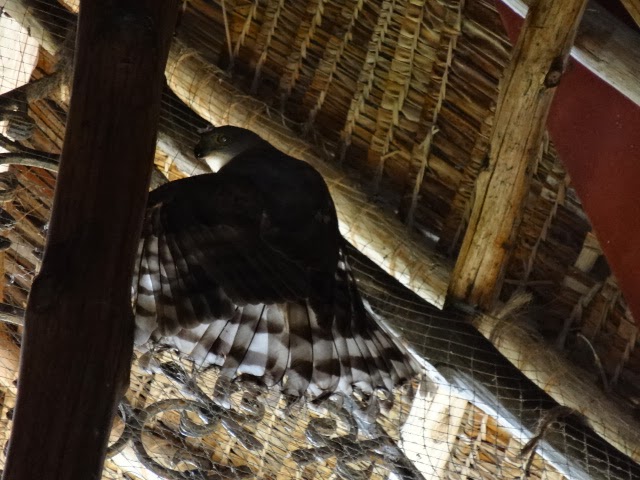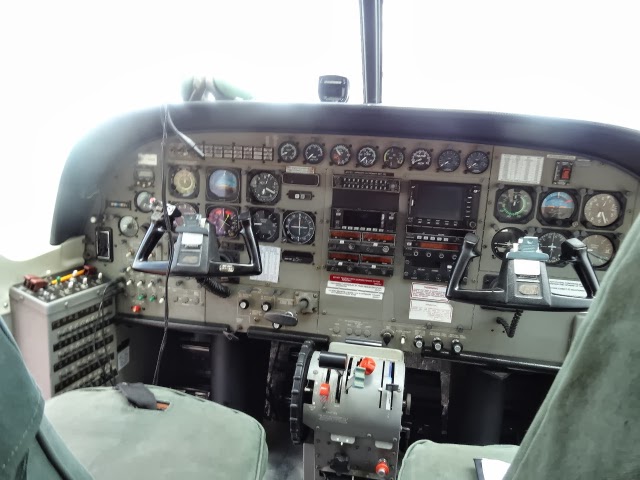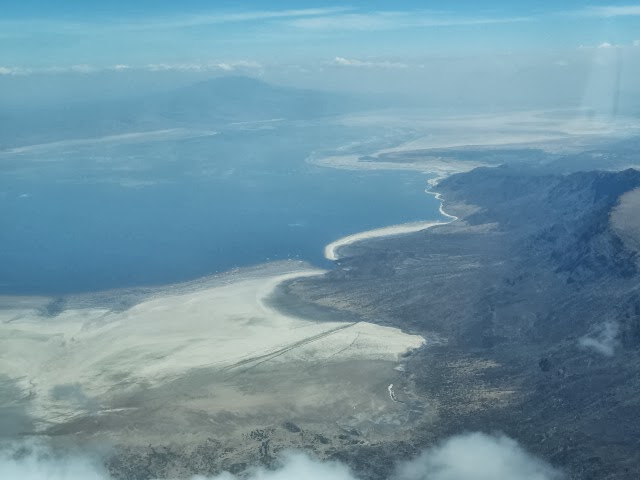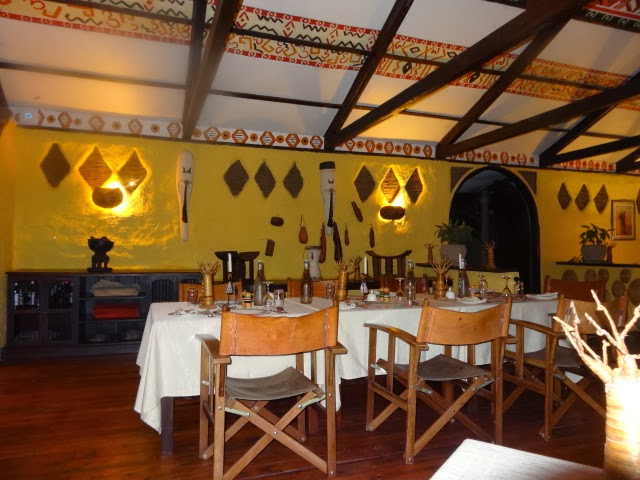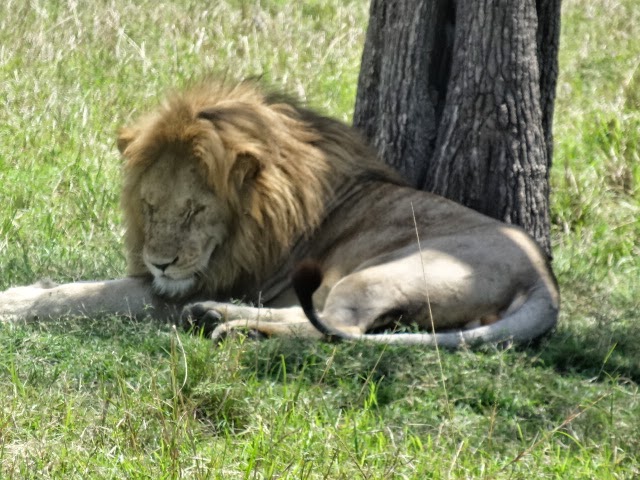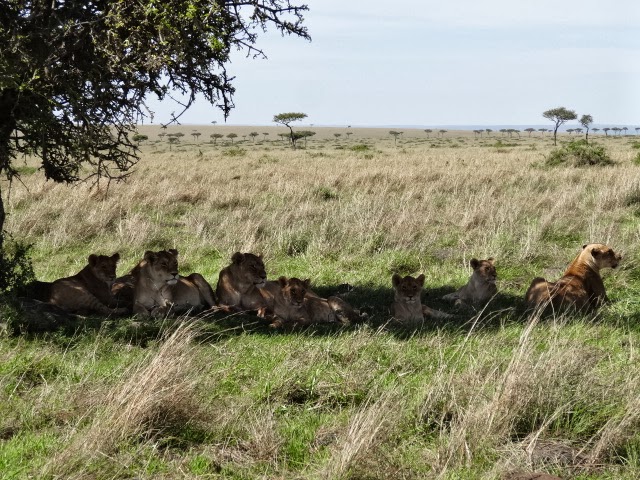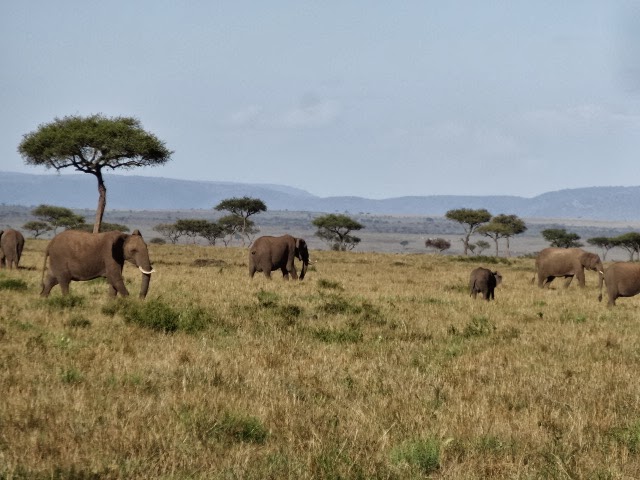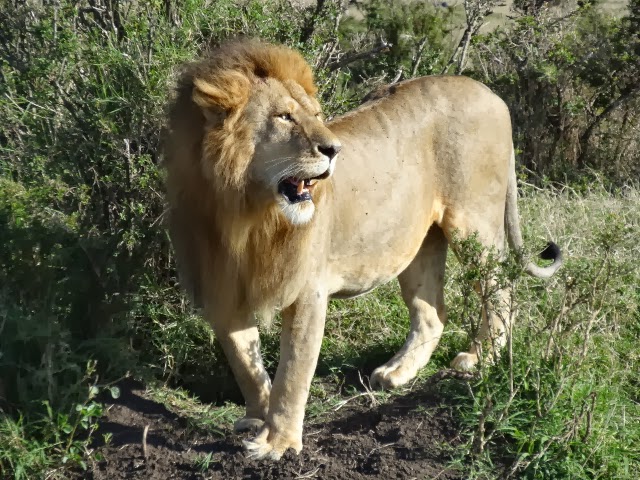 |
| The moon over the Indian Ocean last night as we dined Nomad Restaurant at The Sand’s Resort. Photos will follow tomorrow of our two extraordinary dining experiences, the people we met, and the tour we were graciously provided of the“over the top” accommodations, pricing included. |
Once we’d discovered a newly opened DHL store in a local pharmacy in Diani Beach, we had two thoughts in mind, one; order supplies and two; return the XCom Global MiFi to begin using the two Mobile Hotspots we’d ordered to arrive with the supplies.
We figured that once the two Mobile Hotspots arrived, we’d quickly install them, ensuring they were both working and suited our needs, we made another trip back to the DHL/Pharmacy to return XCom Global’s US $395 a month device.
Let me explain what a Mobile Hotspot is for those of you that may not be aware of these devices or, if you prefer, you can click on the above link. Simply stated, it’s not unlike the router you use in your home for wireless connectivity, either connected to your cable or satellite service.
The difference it that when traveling, or living in a country such as Kenya, there is no cable TV or satellite service offering Internet services to homes, only to businesses. Thus, local residents (and tourists), desiring a connection for their computers, devices, and cell phones must purchase SIM cards to install either into their cell phones, Hotspots or routers in order to receive a phone and data signal.
The end result for us is that we each needed one Mobile Hotspot and our own SIM card. Yes, we could have used one of each among us. The signal strength is diminished by each user simultaneously online. With the heavy data load, we use each day, it is practical for each of us to have our own device and SIM card.
 |
| The moon, 10 minutes before the above photo. This shot was taken as we sat at our table overlooking the Indian Ocean. More will follow tomorrow. |
Who provides the data/phone signal to tap into? In Kenya, it is Safaricom. By purchasing their specific SIM cards, registering it via cell phone, they provide us with a measured amount of data that we’ve purchased in advance.
For example, we pay Kenya Shillings (KES) $1000, US $11.76, for 1.5 gigabytes of data, (purchasing larger amounts reduced the cost), enough to last us both for 3 days, provided we don’t download movies or TV shows. Our average total cost per month for 15 gigabytes of data is KES $10,000, US $117.58 (excluding big downloads) as opposed to the meager 4.39 gigabytes per month that we were allowed with XCom Global.
Don’t get me wrong, XCom Global is a great company and for the usual traveler its an excellent option. Most travelers read their email which uses a minimal amount of data and may check a few websites for restaurants and local points of interest.
But, XCom Globals’s allowed 150 megabytes of data per day (.146 gigabytes) wasn’t sufficient most days for me to download our daily posts and photos, not leaving any usage for Tom. It just wasn’t working well for us. We were cut off a few times for exceeding the allowed data usage, not by XCom Global but by their contracted providers in various places all over the world.
With our own Hotspots, when we run low on gigs, we purchase “scratch-offs” cards to load more data by entering the code on each card. We can check how much data we have left placing the SIM card in a cell phone and dialing code, seconds later receiving a response as to the remaining balance.
Once we install the main SIM card into my phone, we can make local calls. Hans loaned us a cell phone with one of his SIM cards installed to use for local calls so we haven’t purchased a card for making calls on our own phones. The cost to call the US is outrageous comparable to them calling us using their cell phone. Not having the SIM card installed in our smartphones prevented us from incurring US $100’S per month in calls to our families, encouraging us and family members to use Skype which is free with a great signal.
 |
| With Hans and Jeri both gone for the Kenyan holiday this weekend, we are babysitting their two little dogs. This is Jessie, whom they inherited when a nearby homeowner didn’t want her. She is a completely outdoor dog, never sleeping indoors, spending all of her days and nights outside. It was hard to close the doors on her last night when we went to bed, leaving her looking at us. I wanted to pick her up and put her in the bed with us, bt we knew not to upset her routine. She’s a sturdy little dog and an excellent watchdog. For those, who knew us in our old lives, does this remind you of anyone? |
I realize that this information may be boring to our non-geeky readers and mundane to our knowledgeable geeks who already have this concept in the bag. But, just in case there are a few potential travelers out there thinking of how to save on data while traveling, a Mobile Hotspot (around US $100) with SIM cards is the way to go, if and I say, if there is no free wireless data available at your hotel, resort or vacation home.
Please keep in mind there are areas we’ve traveled, such as the Masai Mara, where the Hotspot wouldn’t pick up any signal and we were reliant upon the weak signal that they had in the lodge. Also, the signal we do receive in Kenya is often weak, making it impossible for me to edit the blog posts, particularly the photos and their captions. I apologize for the difficulty in reading these at times. It goes “with the territory.”
 |
| The moon over the Indian Ocean last night at 6:15 pm. |
Honestly, until we arrived in Kenya, we had free wireless connectivity at every house we’ve rented thus far. This situation here in Kenya was new for us and although I love technical stuff (kind of a geek myself), Tom took a huge interest in handling the SIM card installation while I handled the installs of both Hotspots (a one-time thing).
A good feature of the Safaricom SIM card “scratch-offs” is the ability to have some free data to be used between 10:00 pm and 10:00 am during the first two weeks after downloading the new cards. It is during this time, in the middle of the night, that we download TV shows and movies from Graboid (US $20 a month), a service that offers downloads of current TV shows and movies.
 |
| This is Gucci, whom we’re also taking care of this weekend one of the best watchdogs in Kenya. He alerts the security guards to any activities beyond the gate. Known to viciously bite on occasion, he is gentle and loving with us, hanging out with us most days. When we return from going out, he is very cautious in determining it is really us, barking wildly, sniffing, only relaxing when he is confident that we are who he thinks we are. Gucci and Jessie are best friends, playful and protective of one another. They love to chase the goats and the monkeys in the backyard. |
If you have questions, suggestions or general comments, please feel free to comment at the end of this post or send me an email to which I will reply within 12 hours.
As for the package we received last week. It contained the following supplies, all ordered through the US:
1. Two Huawei Hotspots in their original boxes plus two extra batteries
2. A few toiletry items of inconsequential weight
3. Crystal Light Ice Tea – 18 packages that each containing a supply to make 32 quarts. This was for Tom only. I’m now content drinking real iced tea made with two teabags and one quart of purified water, having kicked my Crystal Light habit months ago.
4. Mezzaluna Knife – We used one of these in Italy and it made life so much easier than using dull knives
5. Coconut Oil, organic, extra virgin – one 16 ounce plastic bottle. We use this daily swishing it around in our mouths for 20 minutes which aids in the reduction of bacteria in the mouth and digestive tract. After swishing, we spit it out followed by a thorough brushing with toothpaste which results in a cleaner and healthier feeling mouth while reducing the incidence of bacterial infections. If interested in this concept, read Dr. Bruce Fife’s book, “Oil Pulling” available at all online booksellers.
That’s all folks! That was all that was in the box, weighing 13 pounds. We had all the above shipped to our mailing service in Nevada. We watched online daily as the items arrived in our mailbox. Once all of them had arrived, we instructed the mailing service to place everything in one box, removing all the individual shipping boxes to reduce the weight.
 |
| The 5.9 kg, 13-pound box and its contents that we had shipped from Las Vegas, Nevada, USA to Diani Beach Kenya, using DHL Express at a cost of KES $38,953, US $458 which arrived in four business days to the local DHL/Pharmacy. |
The package had to be shipped through DHL for which our mailing service arranged a pickup. They are the only parcel service within hours of us and we were able to instruct them to phone us on Han’s phone when it arrived in Diani Beach. The regular postal service in Kenya is unreliable and often packages disappear or if they do arrive, it may take months. We didn’t want to take the risk of not receiving it before we leave on December 1, 2013.
The end result of DHL’s only method of sending and receiving packages in this area is its three-day express. That’s it. No other options. The cost for the 13-pound box (5.9 kg) was Kenya Shillings $38,953, US $458!
Yes, we could have justified this in many ways. But we chose the simple reality. Setting up the two Hotspots and sending back the XCom Global Mifi would save us a substantial monthly sum.
These projected amounts will vary as we discover the cost of SIM cards in other countries. Plus, this is a compilation of our estimated costs for data for Kenya, not necessarily the same in other countries, although the Hotspots will work worldwide with the installation of any country’s SIM cards:
Cost reloading SIM cards using scratch-off at US $117.58 per month = US $ 1410.96
Cost of Hotspot devices: (one-time expense) US $ 200.00
Cost of Shipping (entire box): US $ 458.00
TOTAL COST US $ 2068.96
AVERAGE COST PER MONTH: US $ 172.41
AVERAGE COST PER MONTH FOR
RENTAL OF XCOM GLOBAL DEVICE US $ 395.00
MONTHLY SAVINGS US $ 222.59
ANNUAL SAVINGS US $ 2671.04
I supposed this is what they call a “no brainer.” No guilt over the US $458 shipping fee with DHL.
Tom enjoyed tracking the package’s route on the DHL website daily. When it arrived in Nairobi, Kenya it passed through customs seamlessly continuing on its way. It took 4 business days from Las Vegas, Nevada to Diani Beach Kenya, arriving at the DHL/Pharmacy who promptly called us to come to pick it up which we did that day on our way to Nakumatt Grocery for no additional cab fare.
As for returning the MIFi to XCom Global, we did the reverse, shipping the package out on this past Tuesday, Tom tracking it online daily, with it arriving in San Diego, California on Friday. The cost for that small package under one pound was only US $33.00, much to our surprise.
There it is folks. Our technology needs are forcing us to learn new ways to acquire the best possible service at the best possible price. In reality, that will never change, as technology continues to change faster than we can keep up with no access to news reports (no TV) keeping us informed as in the past.
Each time we’ve face a challenge, we remind ourselves of the brave souls that traveled across the US (and other countries) in search of a new life, in a covered wagon with no roads, no water, no electricity, dangerous elements, no medical care, limited food and of course, no technology.
But, everything is relative and this is “our time.” We strive to continue to embrace it, no matter our age or our interests, offering up a wealth of new knowledge that only can add to the quality of our lives as we all move into the future.


